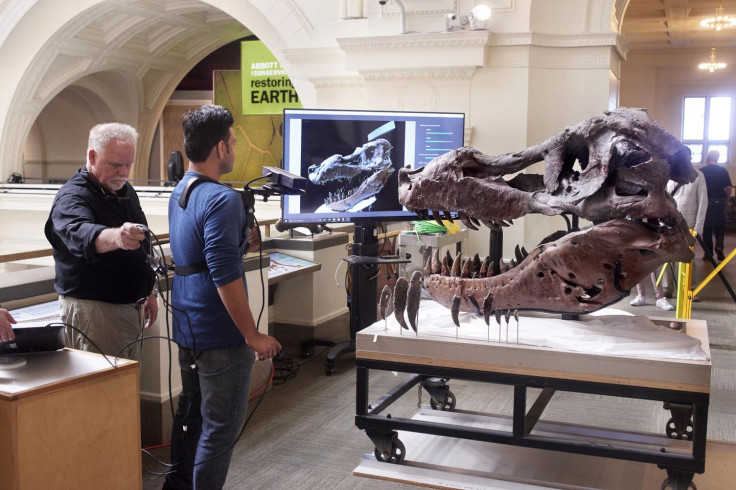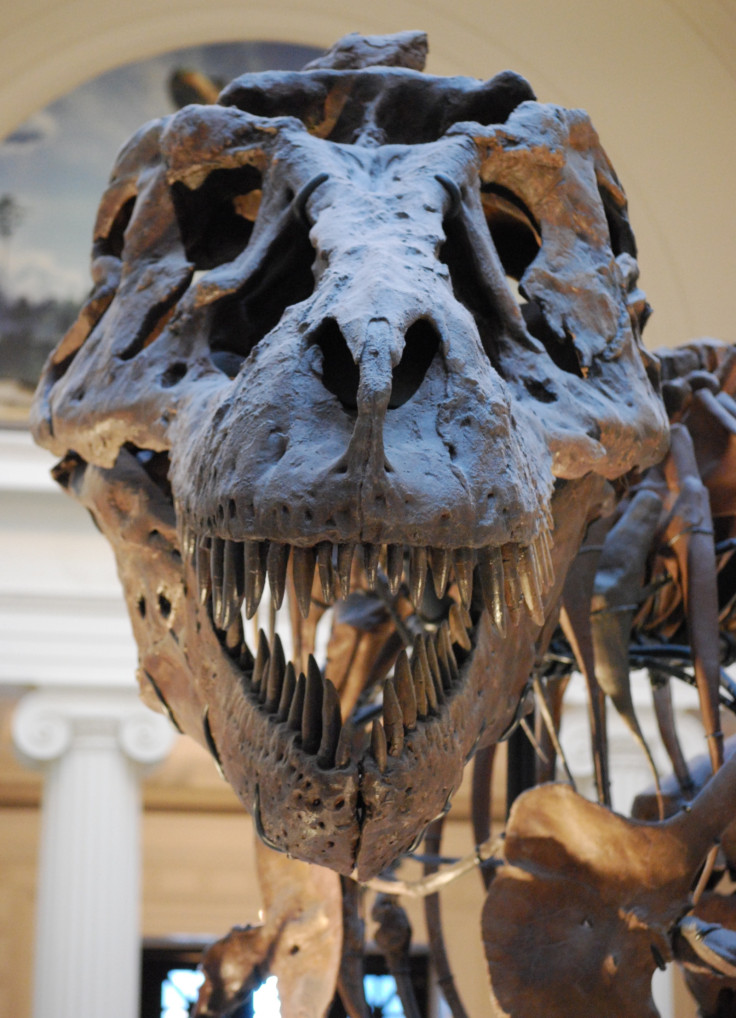The largest T-rex skull ever found is full of holes and no one knows why
Was it the worst ever case of toothache, or marks from a deadly battle?

What made a series of holes in the jaw in one of the most fearsome Tyrannosaurus rex specimens ever discovered? Scientists have been puzzling over them but the origin of the holes in the dinosaur's jaw remain a mystery.
Standing at 3.7 metres tall and 12.3m long, Sue was a formidable beast when alive. The dinosaur's skull alone measures almost 5 foot long, and almost all of her long, sharp teeth are preserved intact.
But despite the skeleton's almost immaculate preservation, there are some peculiarities to the fossil that scientists have had a hard time rationalising.
The holes in Sue's jaw are easy to spot. They have smooth, rounded edges showing that the bone healed and smoothed over the edges of whatever made the holes during the dinosaur's lifetime. So the holes weren't fatal, although scientists' two main ideas for what caused them were both very unpleasant experiences.
The first option, which was assumed for many years to be true, was that the holes were formed from a vicious attack from another T-rex. Another hypothesis was that the holes were formed by a parasitic infection from eating infected prey. This would cause painful abscesses that would have burst through the bone from the inside out. Sue could have picked up a parasite from eating contaminated meat, researchers supposed.
But analysis of the fossil skull using a 3D scanner has revealed that neither of these theories fit. The spacing between the holes is irregular and can't be explained by a typical bite mark. To add to the puzzle, the holes are angled wrong for them to have been caused by the teeth of another dinosaur.
The 3D scans also revealed that a parasitic infection is unlikely to have made the holes. This would have started at the inner side of the jaw and worked its way to the outside, but the holes actually taper from the outside in.

So what caused the holes? The latest analysis has asked a lot more questions than it has answered on this front. But it's hoped that further tests with the 3D scanner – which is much lighter and cheaper than traditional scanners – could help find some more answers.
"A lot of people will be able to start using this [scanner]," Anshuman Das of MIT, who conducted the latest research on the fossil said in a statement. "For example, paleontologists or museums that are on a very tight budget. There are so many other fields that could benefit from this."
The research is published in the journal PLOS ONE.
© Copyright IBTimes 2024. All rights reserved.























